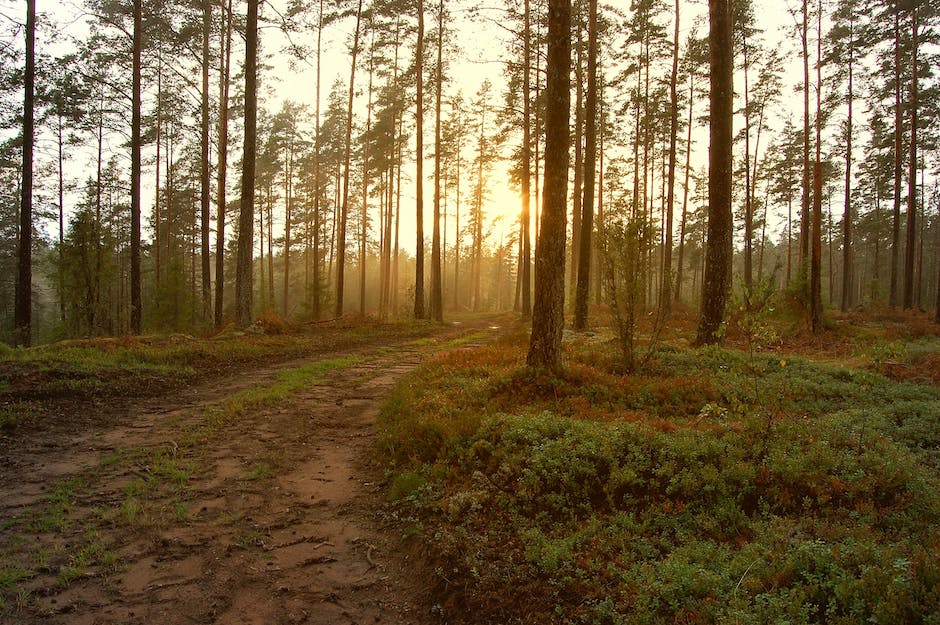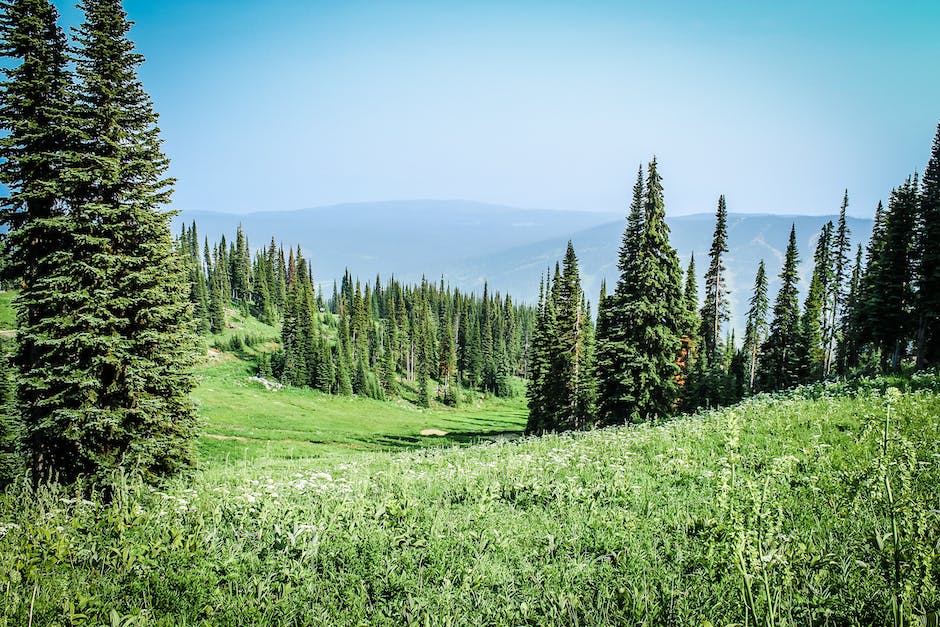There is a lot of debate surrounding whether or not pine trees pollute the environment. Some argue that pine trees release large amounts of pollutants into the air, while others claim that pine trees actually help to purify the air. However, the jury is still out on this topic and more research needs to be done in order to determine the true effects of pine trees on the environment.
Pine trees do not pollute the environment.
Are pine trees good for environment?
Pine trees are an excellent aid against soil erosion because their roots help to hold the soil in place. Pine trees are a popular choice for erosion control because they are very hardy and can survive and thrive in most any soil conditions.
Pine trees release particles that range in size from 1 to 100 nanometers. These particles can be large enough to seed clouds and create shade. This is a huge benefit in an age when climate change is expected to result in extended periods of drought.
What are the disadvantages of pine trees
Pine trees are beautiful and popular trees, but there are some disadvantages to consider before planting one. Pine trees drop needles which can be a pain to clean up, and they also exude a sticky sap. Pine trees need an acidic soil pH below 70 to thrive, so if you don’t have that kind of soil, it’s best to choose another tree.
Pine trees are known for their ability to absorb large amounts of nutrients from the soil. This can have a negative impact on the surrounding area, as the soil is left depleted of these important nutrients.
Do pine trees cause foundation problems?
Pine trees are a great option if you’re looking for trees that won’t damage your foundation. Their roots extend straight down into the soil, so they don’t put any sideways pressure on your foundation.
Pines are at the bottom of the list in terms of oxygen release because they have a low Leaf Area Index Oak and aspen are intermediate in terms of oxygen release Douglas-fir, spruce, true fir, beech, and maple are toward the top of the list for oxygen release.
Do pine trees help the carbon footprint?
Pine trees are carbon sinks, which means that they absorb carbon dioxide from the atmosphere and store it in their tissues. This process helps to offset the greenhouse gas emissions that contribute to climate change. Pine trees are found in forests around the world, but they also make good landscape plants. Just be sure to give them enough room, because they need plenty of it.
Pine trees are known to be excellent air purifiers. They can help reduce inflammation for people with asthma or allergies. Their scent is also helpful in promoting relaxation and reducing stress levels.
How much carbon does a pine tree remove
One mature tree can absorb 48 pounds of carbon dioxide from the atmosphere every year, and release oxygen in exchange. This is just one of the many benefits of trees. Trees contribute to cleaner air, improved water quality, and provide habitat for wildlife.
If you find brown spots on pine needles from different parts of the tree, it is possible that the tree has a disease. Look for brown stripes or brown clumps in the center of the needles, as this may be an indicator of a problem. If you notice any of these signs, contact a qualified tree expert to have the tree checked out.
Why did people avoid the pine forest?
The shortcut through the pine forest can be a little eerie and frightening at night due to the strong wind and rustling leaves. It’s best to avoid taking this shortcut alone at night and stick to the main road.
A major threat to high elevation white pines and their ecosystems is the non-native Cronartium ribicola fungus, which causes the disease white pine blister rust. All North American white pines are susceptible to the rust, making it a serious problem for these trees.
How far should a pine tree be from a house
When you are planting a tree, you have to think about how far below ground its growth might extend. This is especially important if your tree is planted close to your house. While it’s always wise to plant trees about 15 feet away from your house, sometimes you are in a situation where you purchased a home with existing mature trees. In this case, you need to make sure that the roots of the tree are not going to damage your foundation.
Pine is traditionally used as an herb to help with respiratory tract swelling, stuffy nose, hoarseness, common cold, cough, bronchitis, and fevers. It is also known to have anti-inflammatory and antimicrobial properties, which makes it useful for treating skin conditions and minor muscle and nerve pain. Some people use pine oil or pine needle extractions for these purposes.
Why does grass not grow under pine trees?
Pine trees grow best in acidic soils, but grass generally prefers neutral to slightly alkaline soils. This soil difference explains why grass has difficulty growing beneath pine trees. In addition, pine trees block sunlight from reaching the ground below them, further limiting the growth of grass. The pine needles that fall from the trees also form a dense mat, which further restricts sunlight and makes it difficult for grass to grow.
You should not plant the following trees in your property: Red Oak, Sweetgum, Bradford Pear, Lombardy Poplar, Ginkgo biloba, Eucalyptus, Mulberry, Weeping Willow.
Are pine trees harmful
Fir trees, many times used as Christmas trees, are considered to be mildly toxic. The tree oils can irritate the mouth and stomach, causing excessive drooling and vomiting. Almost any pine ingested in large numbers is known to cause toxicity.
The practice of topping large evergreen trees in order to control their size or growth is not justified. The removal of the upper main stem opens the tree to internal decay, disease or damaging insects; it also removes the most productive portion of the tree.
What tree converts the most CO2 to oxygen
The Yellow Poplar is a magnificent tree that not only provides beauty and shade, but also helps to clean the air we breathe. For years, the Yellow Poplar has been at the top of the list for the best C02 scrubber, as revealed by a New York City study. This tree is a true asset to any community and we should all do our part to help protect and preserve these important trees.
If you work with cedar or pine woods, or pine resin, you may be at risk for developing asthma or chronic lung disease. The particles from these materials can irritate your lungs and cause long-term damage. If you have any symptoms of asthma or lung disease, be sure to see a doctor so you can get the treatment you need.
Warp Up
Pine trees do not pollute the environment.
Pine trees produce a large amount of pollution, contributing to global warming, deforestation, and water pollution. While they are an important part of the environment, their negative impact on the environment outweighs their positive impact.

My interest in trees started when I first saw the giant sequoias in Yosemite.
I was a teenager then, and I remember thinking, “I need to learn more about this.”
That moment stuck with me.
A few years later, I went on to study forestry at Michigan Tech.
Since graduating, I’ve worked in a mix of hands-on tree care and community education.
I’ve spent over ten years helping people understand how to plant, maintain, and protect the trees in their neighborhoods.
I don’t see trees as just part of the landscape.
They are living things that make a real difference in our daily lives.
